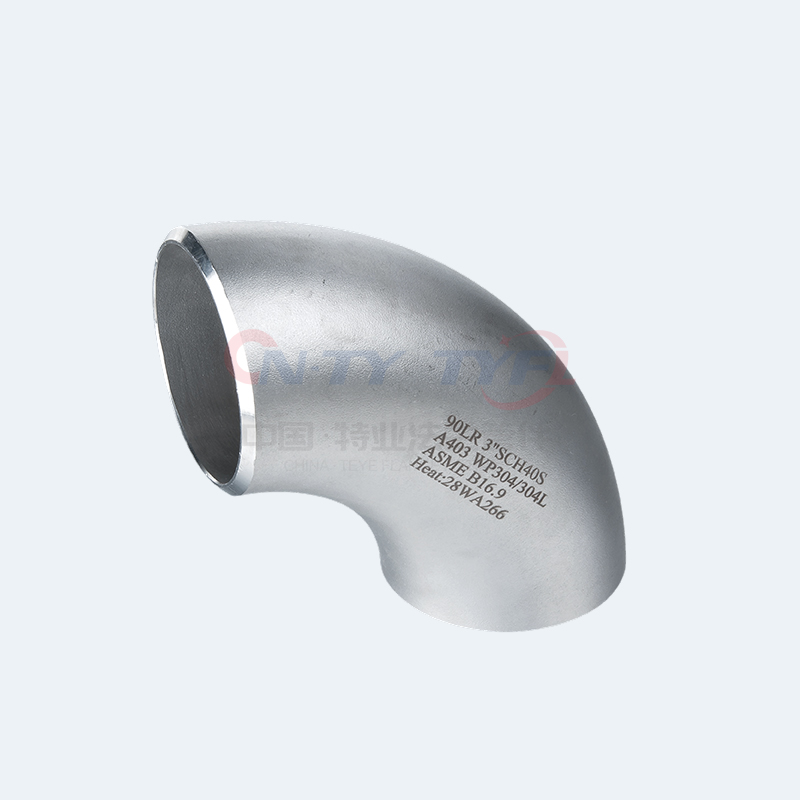Summary of Elbow Manufacturers: Performance Comparison of National Standard 90 Degree Elbows
In pipeline systems, a 90 degree elbow is a fitting that changes the direction of the pipeline. A 90 degree elbow is one of the commonly used elbow fittings in pipeline engineering, accounting for approximately 80%. The materials for 90 degree elbows include cast iron, stainless steel, alloy steel, malleable cast iron, carbon steel, non-ferrous metals, and plastics. The meaning of the national standard 90 degree elbow is a 90 degree elbow produced according to the national standard. GB12459 "Steel Butt Welded Seamless Pipe fittings", GB/T14383 "Forged Steel Socket Welded Pipe fittings", GB/T14626 "Forged Steel Threaded Pipe fittings", and GB/T13401 "Steel Plate Butt Welded Pipe fittings". Usually, different forming processes are selected for 90 degree elbows with different materials and wall thicknesses.
The connection methods between a 90 degree elbow and a pipe include direct welding (the most commonly used method), flange connection, hot melt connection, electric melt connection, threaded connection, and socket connection. According to production processes, it can be divided into: welded elbows, stamped elbows, push made elbows, cast elbows, butt welded elbows, etc.
The national standard 90 degree elbow has the following characteristics:
1. It has high temperature and pressure resistance, good flexibility, and heat resistance, and its performance is higher than other plastic pipes. Easy to install, good thermal conductivity, suitable for floor heating systems, recyclable.
2. The P national standard stamped elbow pipe has excellent impact strength, can be hot-melt welded and mechanically connected, and is superior to the thermal conductivity of PB-PP-R.
Summary of 90 degree elbow manufacturers: Performance comparison of 90 degree elbows according to national standards:
1. In terms of long-term pressure resistance, only from the design stress perspective, the national standard 90 degree elbow has the best pressure resistance performance. However, due to various factors, the actual wall thickness of floor heating pipes is usually 2mm. At this wall thickness, all types of pipes can meet the requirements of floor heating, but the pressure resistance advantage of the 90 degree elbow pipe in the national standard cannot be reflected;
2. Thermal conductivity: The pipes used for floor heating need to have good thermal conductivity.
3. Low temperature heat resistance and impact resistance: PE RT and PEX have relatively good low temperature impact resistance. During winter construction, pipes are less susceptible to impact and rupture, increasing the flexibility of construction arrangements.
4. Environmental friendliness: PE-RT can be recycled without polluting the environment. The inability to recycle PEX will result in secondary pollution;
5. Stability of processing performance: PEX has issues with controlling crosslinking degree and crosslinking uniformity, and the processing is complex and directly affects the performance of the pipe.
Development Trend of National Standard 90 Degree Elbow Pipe:
The raw material for the national standard 90 degree elbow not only has a qualified creep rupture curve, but also has a moderate pipe price, making construction relatively convenient and fast compared to other varieties. The connection form of the national standard 90 degree elbow is the most reliable form of standard mutual fusion hot melt connection at present. The diameter of the pipe fitting is larger than the inner diameter of the same specification pipe, and there is no local reduction mechanism in the system

